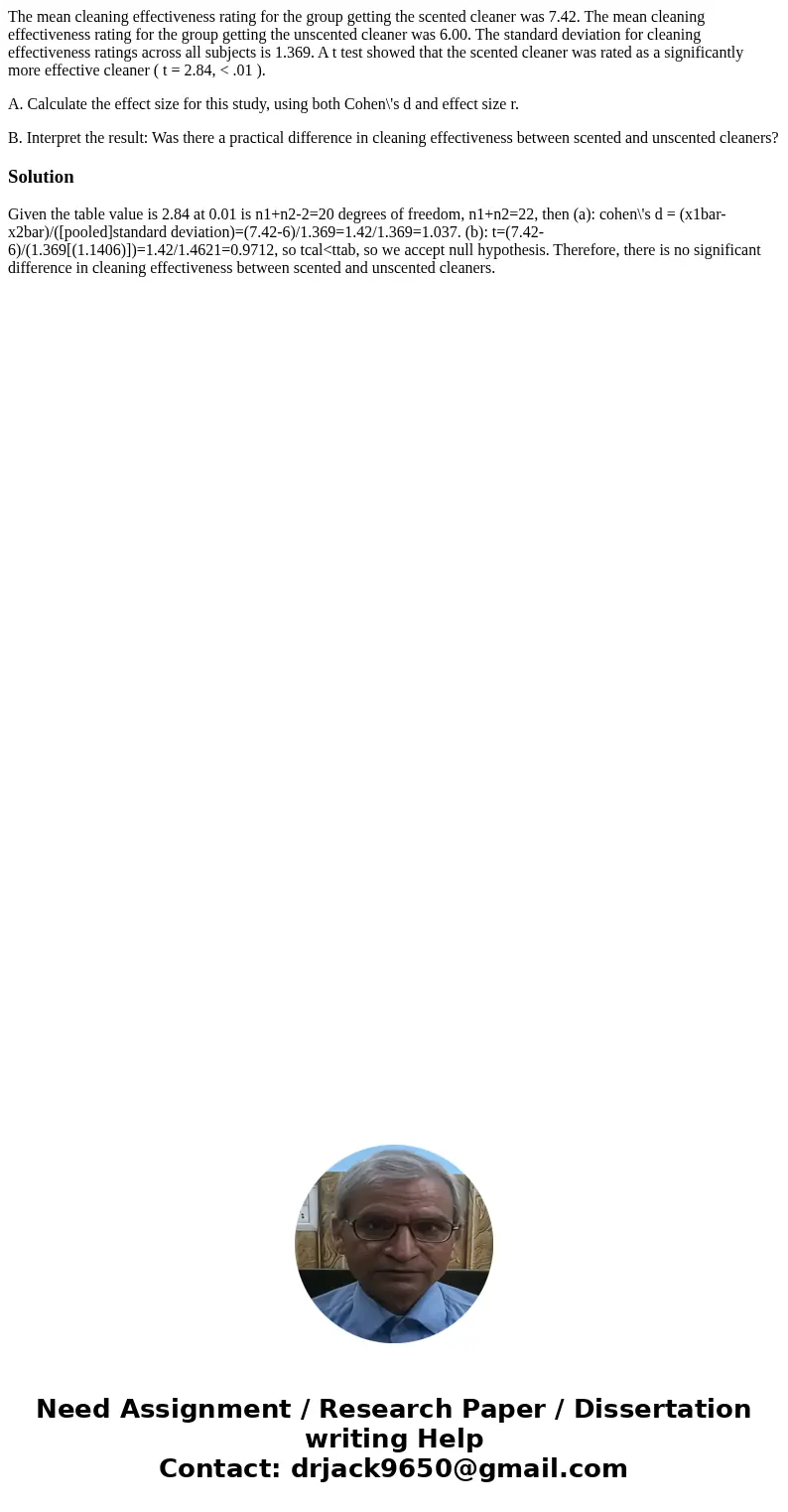The mean cleaning effectiveness rating for the group getting
The mean cleaning effectiveness rating for the group getting the scented cleaner was 7.42. The mean cleaning effectiveness rating for the group getting the unscented cleaner was 6.00. The standard deviation for cleaning effectiveness ratings across all subjects is 1.369. A t test showed that the scented cleaner was rated as a significantly more effective cleaner ( t = 2.84, < .01 ).
A. Calculate the effect size for this study, using both Cohen\'s d and effect size r.
B. Interpret the result: Was there a practical difference in cleaning effectiveness between scented and unscented cleaners?
Solution
Given the table value is 2.84 at 0.01 is n1+n2-2=20 degrees of freedom, n1+n2=22, then (a): cohen\'s d = (x1bar-x2bar)/([pooled]standard deviation)=(7.42-6)/1.369=1.42/1.369=1.037. (b): t=(7.42-6)/(1.369[(1.1406)])=1.42/1.4621=0.9712, so tcal<ttab, so we accept null hypothesis. Therefore, there is no significant difference in cleaning effectiveness between scented and unscented cleaners.

 Homework Sourse
Homework Sourse